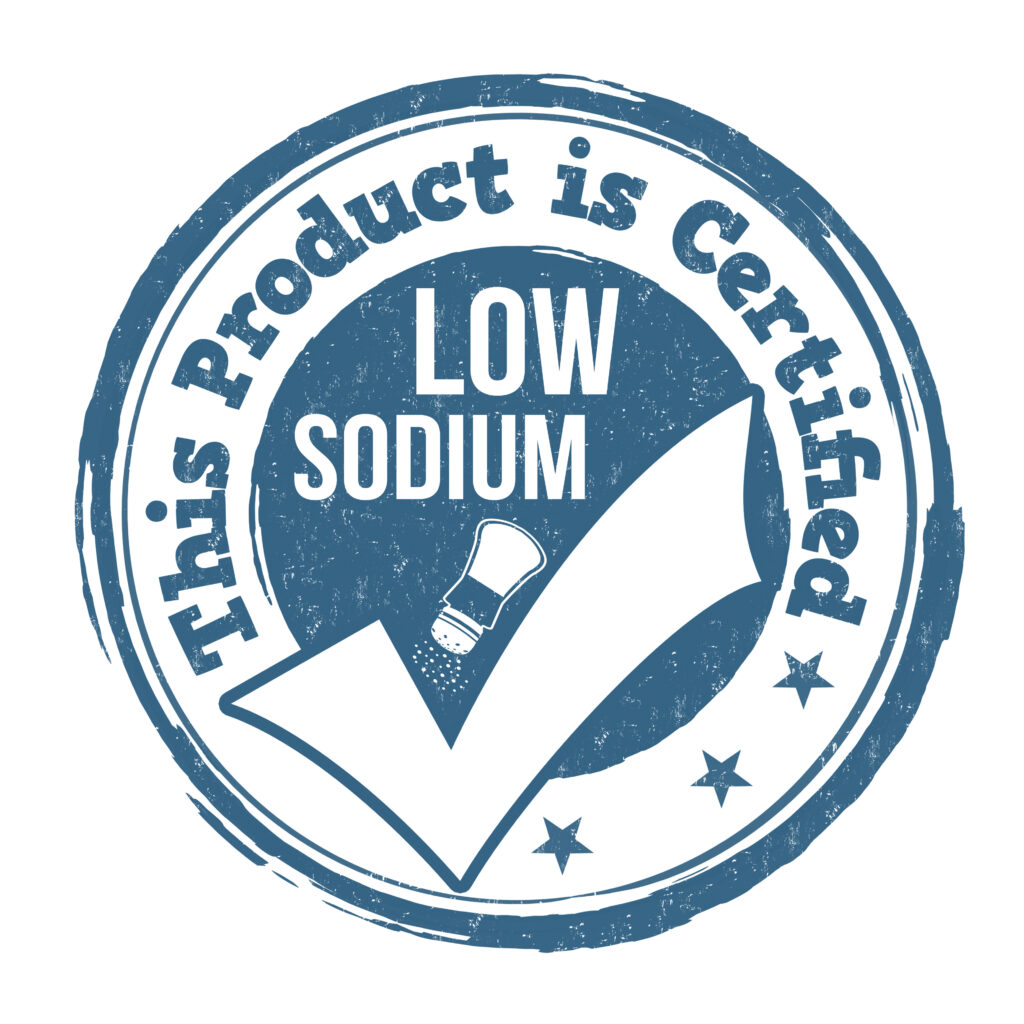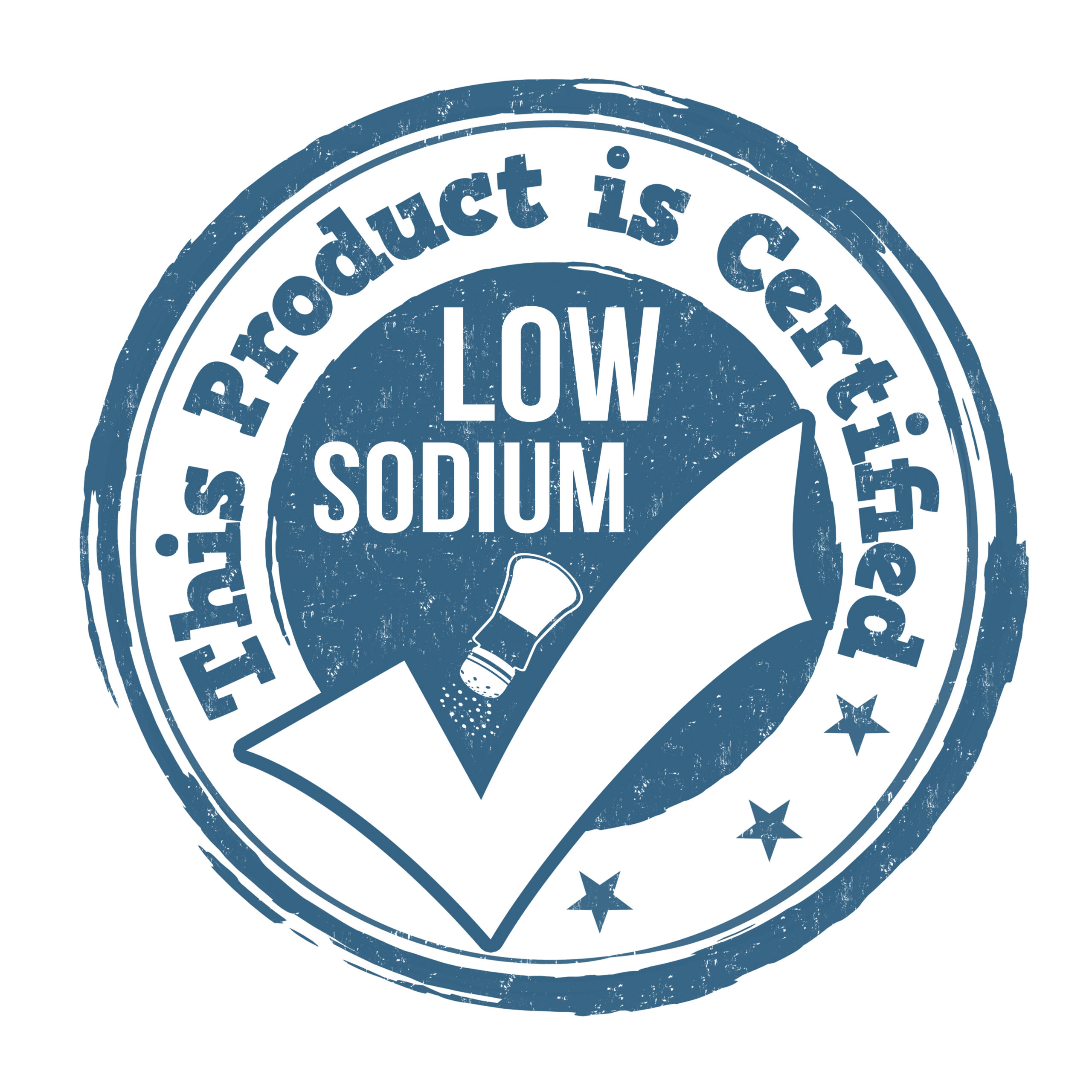Low Sodium Foods
If you have heart disease or other cardiovascular risk factors, you may wonder what dietary changes can help to protect your heart. For starters, choosing more low-sodium foods and limiting your intake of added sodium can have a profound impact on your heart health.
By learning which low-sodium foods to choose and working with a cardiovascular dietitian, you can significantly lower your risk factors and potentially reduce the need for medication.
Let’s dive into the best low-sodium foods to include in your diet, why it’s important, and how to season your food while sticking to the recommended sodium guidelines.
Sodium and Heart Health Connection
There is a strong link between high sodium intake and heart health, primarily due to sodium’s effect on blood pressure. High blood pressure is a direct risk factor for stroke, heart attack, and heart failure.
One recent study involving 213 people showed that lowering sodium in the diet significantly lowered blood pressure levels in the majority of the participants, regardless if they were on blood pressure medication or not.
Therefore, gaining better control of your blood pressure through diet can reduce the development of heart conditions associated with high blood pressure and support the management of existing heart failure.
According to the World Health Organization, close to 75% of cardiovascular disease cases could be prevented through healthy diet and lifestyle changes, including lowering sodium intake. Even if you already have high blood pressure or heart disease, you still have the power to optimize your heart health, and it’s never too late.
Reducing sodium in your diet is one big step in improving your heart health. And while some of our sodium intake comes from the salt shaker, most comes from highly processed foods and fast foods. The challenge is the hidden sodium in many foods, and a large majority of seemingly healthy packaged foods can be very high in salt.
As a heart health dietitian, I help my clients decipher the food label, guide portion sizes, and offer lower sodium tasty alternatives.

Low Sodium Food List
If you’ve ever discussed your diet with your doctor, you may have received a list of foods you can’t eat. But here we’re going to focus on what low and no-sodium foods you can and should eat, and there are plenty of options!
For reference, the American Heart Association, or AHA, recommends a daily limit of 2300 milligrams (mg) of sodium per day and ideally less than 1500 mg for those with heart disease.
Vegetables
Most fresh vegetables are naturally low in sodium, so this is not meant to be an exhaustive list. Frozen vegetables without added sauces or seasoning are also encouraged. This list includes some of the lowest sodium veggies, all under 15 mg of sodium per 1-cup serving.
- Broccoli
- Kale
- Spinach
- Asparagus
- Collard greens
- Cucumbers
- Green beans
- Potatoes
For frozen vegetables, limit any that say they contain a sauce, are “lightly sauced,” or seasoned, as these likely have added salt. Limit canned veggies unless they say reduced sodium, no salt, or no salt added.
Fruits
All fresh and frozen fruits are fantastic additions to a low-sodium diet. And unlike canned vegetables, canned fruit doesn’t typically have any salt added. Here are some of the best fruit choices, all containing less than 10 mg of sodium per 1-cup serving.
- Apples
- Grapes
- Berries – blueberries, strawberries, raspberries
- Oranges
- Mangoes
- Bananas – Bananas are also high in potassium, which supports healthy blood pressure.
Proteins
Getting enough low-sodium lean protein sources can also support a healthy heart. While high-protein foods are naturally higher in sodium than fruits and vegetables, fresh proteins are considered a lower-sodium food that can fit within a heart-healthy diet.
In terms of animal-based proteins, fresh is best, as many frozen options tend to pack more salt as a preservative.
Here are some of the top choices to include, which typically contain less than 100 mg sodium per 4-oz serving.
- Skinless chicken breast, turkey, fish, pork, and at least 98% lean beef
- Eggs
- Legumes – dried beans and peas
- Unsalted nuts and seeds
While most fish are naturally low in sodium, certain types such as haddock or shellfish such as shrimp and scallops may run higher.
In addition, sodium is added to fish and chicken as a preservative or to impart a juicer flavor. Because of this, you should always read the nutrition label on protein packages even if they appear to be unseasoned.
Whole Grains
Many whole grains and starches are also considered foods with low sodium content. Limiting added butter, salt, or salty sauces like soy sauce can help keep your sodium intake down when consuming grains.
Here are some of the best choices, all containing less than 50 mg sodium per 1-cup serving. Pasta’s sodium content is on the higher end compared to the others but is still considered moderately low in sodium.
- Quinoa
- Barley
- Oats
- Whole-grain pasta
- Brown rice
Low Sodium Snacks
In addition to your daily meals, there are plenty of low-sodium snack options you can choose from. Here are a few of my client favorites that are both whole foods and packaged convenience items:
Whole food snacks
- Unsalted nuts and seeds – pistachios, walnuts, almonds, as well as pumpkin or sesame seeds
- Raw veggies with hummus
- Fruit with plain Greek yogurt or peanut butter
- Smoothies made with fresh fruit, greens, and low-sodium soy milk
Packaged snacks
When scoping out packaged snacks, look for the words “low sodium,” “no salt added,” or “reduced sodium” as a starting point. Then, look for a product that ideally contains less than 300 mg sodium per serving.
Here are some ideas (This article contains affiliate links. As an Amazon Associate I earn from qualifying purchases at no additional cost to you).
- Air-popped popcorn (limit added salt and try garlic powder, onion powder, or paprika for flavor)
- Roasted chickpeas or edamame (I like this one).
- Certain protein bars (I like this flavor)
- Freeze dried apples (I like this one)
- Dehydrated carrot sticks (I like this one)
The whole-food snack options are preferable as they are more nutritious and lower in sodium. However, enjoying a packaged snack in moderation can fit within your daily sodium allotment and provide satisfaction.
Other Ways to Cut Down on Sodium
In addition to incorporating more of these low-sodium foods into your day, there are other easy ways to reduce sodium without compromising taste. Here are a few suggestions if you’re not sure where to start:
- Choose mostly whole foods
- Read food labels and look for products low in added sodium. It’s important to check the labels on all food products, not just those that may outwardly appear salty. There can be a lot of hidden sodium in foods you may not think of – such as instant puddings and even baking soda!
- Reduce added salt while cooking and at the table
- Try low-salt seasonings such as fresh or dried herbs and spices or no-salt seasoning blends
- Limit beverages high in sodium, such as vegetable juices, energy and sports drinks, and soda
- Canned goods – choose no salt, reduced sodium, or no added salt options
Daily Salt Intake Guidelines
As mentioned above, the AHA guidelines for salt intake is no more than 2,300 mg per day, with an ideal limit of 1500 mg per day in those with high blood pressure or heart disease. This equates to only about 0.75 to 1 teaspoon of salt per day, and can quickly add up without conscious thought.
Always consult a cardiologist and heart health dietitian for personalized recommendations and specifics on implementing a low-sodium lifestyle. These experts can help you balance supporting your heart health and enjoying the nutritious foods you love.
The Bottom Line
Reducing sodium in your diet is essential for heart health, but it doesn’t have to feel so restrictive.
A cardiovascular dietitian can help you feel supported and provide specific guidance choosing more foods with low sodium content and what to eat more of that suits your lifestyle, besides just being told what you can’t have.
Learn more about my 1:1 nutrition counseling services for personalized support and guidance on optimizing your heart health.
References:
1. Suckling RJ, Swift PA. The health impacts of dietary sodium and a low-salt diet. Clin Med (Lond). 2015 Dec;15(6):585-8. doi: 10.7861/clinmedicine.15-6-585. PMID: 26621954; PMCID: PMC4953267.
2. Jaques DA, Wuerzner G, Ponte B. Sodium Intake as a Cardiovascular Risk Factor: A Narrative Review. Nutrients. 2021 Sep 12;13(9):3177. doi: 10.3390/nu13093177. PMID: 34579054; PMCID: PMC8470268.
3. Wajngarten M, Silva GS. Hypertension and Stroke: Update on Treatment. Eur Cardiol. 2019 Jul 11;14(2):111-115. doi: 10.15420/ecr.2019.11.1. PMID: 31360232; PMCID: PMC6659031.
4. Gupta DK, Lewis CE, Varady KA, et al. Effect of Dietary Sodium on Blood Pressure: A Crossover Trial. JAMA. Published online November 11, 2023. doi:10.1001/jama.2023.2365.
5. Stewart J, Manmathan G, Wilkinson P. Primary prevention of cardiovascular disease: A review of contemporary guidance and literature. JRSM Cardiovasc Dis. 2017 Jan 1;6:2048004016687211. doi: 10.1177/2048004016687211. PMID: 28286646; PMCID: PMC5331469.
6. Wang YJ, Yeh TL, Shih MC, Tu YK, Chien KL. Dietary Sodium Intake and Risk of Cardiovascular Disease: A Systematic Review and Dose-Response Meta-Analysis. Nutrients. 2020 Sep 25;12(10):2934. doi: 10.3390/nu12102934. PMID: 32992705; PMCID: PMC7601012.
7. American Heart Association. Shaking the Salt Habit to Lower High Blood Pressure. Last updated June 1, 2023. Accessed November 7, 2023. https://www.heart.org/en/health-topics/high-blood-pressure/changes-you-can-make-to-manage-high-blood-pressure/shaking-the-salt-habit-to-lower-high-blood-pressure
8. United States Department of Agriculture. USDA FoodCentral Database. https://fdc.nal.usda.gov/
9. Filippini T, Naska A, Kasdagli MI, Torres D, Lopes C, Carvalho C, Moreira P, Malavolti M, Orsini N, Whelton PK, Vinceti M. Potassium Intake and Blood Pressure: A Dose-Response Meta-Analysis of Randomized Controlled Trials. J Am Heart Assoc. 2020 Jun 16;9(12):e015719. doi: 10.1161/JAHA.119.015719. Epub 2020 Jun 5. PMID: 32500831; PMCID: PMC7429027.
